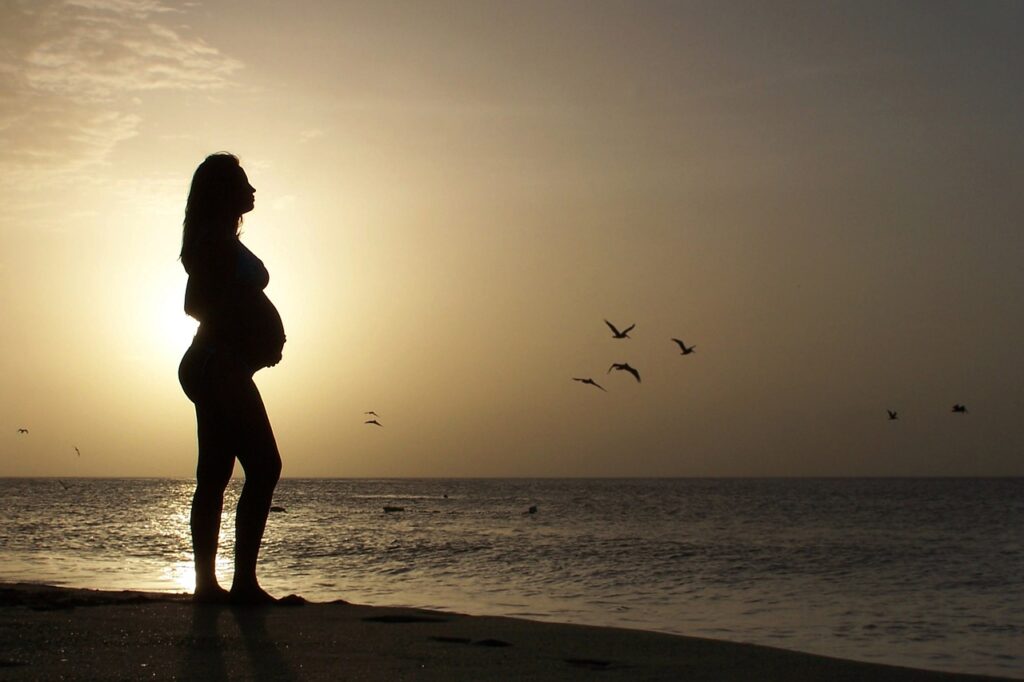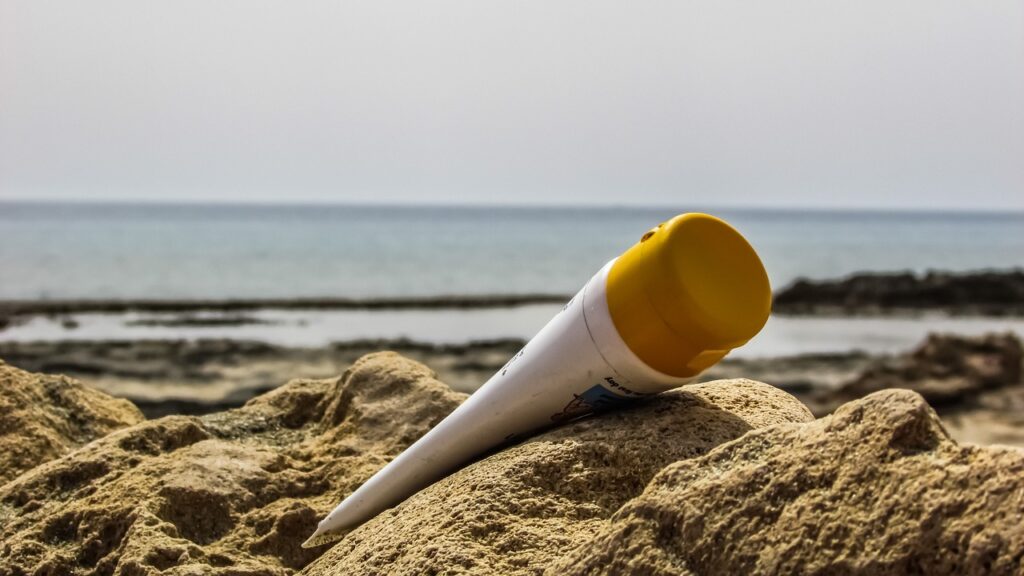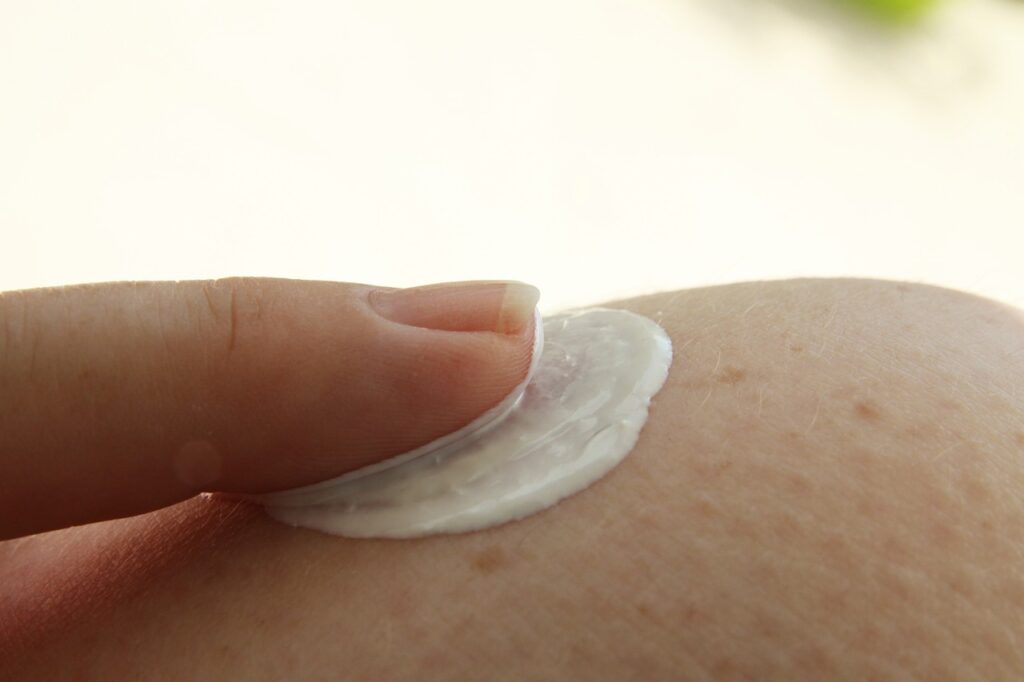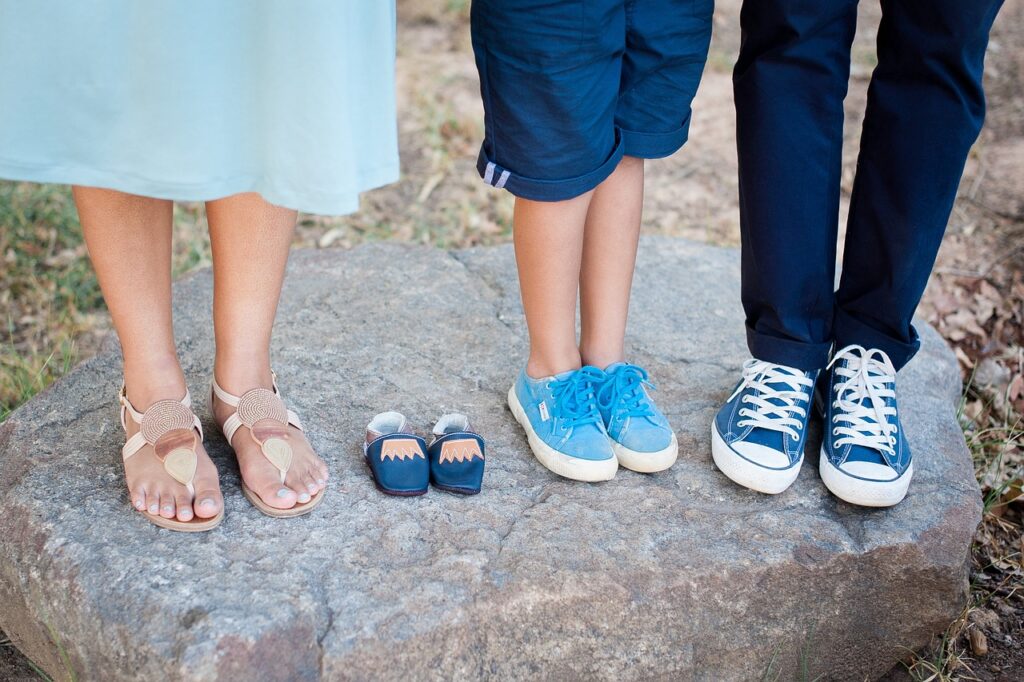
Introduction
Congratulations on your pregnancy! Travelling during first trimester can be a wonderful experience, but it also requires some extra precautions, especially when it comes to sun protection. In this article, we will guide you through essential tips and strategies to ensure your safety and comfort while traveling to sunny destinations.
Prioritize Safety and Consult Your Healthcare Provider
Your health and the well-being of your baby should always be the top priority. Before planning any travel during the first trimester, consult your healthcare provider. They will assess your individual health and provide personalized advice based on your medical history and any potential risks associated with your pregnancy.

Choose Destinations Wisely
Opt for destinations that are safe Travelling During First Trimester, clean, and offer good medical facilities. Avoid places with high altitudes or areas where there’s a risk of contracting certain infections or diseases. Familiarize yourself with local medical facilities and emergency services available at your travel destination.
Keep Travel Duration in Mind
Long journeys can be tiring and uncomfortable, especially the travelling during first trimester when fatigue and morning sickness are common. If possible, opt for shorter trips to minimize stress on your body.
Understanding the Importance of Sun Protection while Travelling During First Trimester

Travelling During First Trimester can lead to increased skin sensitivity, making pregnant women more susceptible to the harmful effects of the sun’s ultraviolet (UV) rays. Prolonged sun exposure without adequate protection can lead to sunburn, skin damage, and an increased risk of developing melasma or “pregnancy mask.”
Choosing the right sunscreen during pregnancy is essential to protect your skin from harmful UV rays while ensuring the safety of both you and your baby. Here are some tips to consider when selecting a sunscreen during pregnancy:
- Broad-spectrum protection: Look for a sunscreen that provides broad-spectrum protection, meaning it shields your skin from both UVA and UVB rays. UVA rays can cause premature aging, while UVB rays are responsible for sunburns. A broad-spectrum sunscreen offers comprehensive protection against both types of rays.
- SPF level: Choose a sunscreen with a Sun Protection Factor (SPF) of at least 30. SPF 30 blocks about 97% of UVB rays, providing sufficient protection for most people. Higher SPF values offer slightly more protection, but the difference is minimal.
- Physical or mineral sunscreen:
- egnant women may prefer physical or mineral sunscreens containing ingredients like zinc oxide or titanium dioxide. These work by forming a protective barrier on the skin’s surface, reflecting and scattering UV rays away from the skin. They are less likely to be absorbed into the bloodstream compared to chemical sunscreens.
- Avoid oxybenzone and retinyl palmitate: Certain chemicals found in some sunscreens, such as oxybenzone and retinyl palmitate (a form of vitamin A), may not be ideal during pregnancy. Although research is limited, it’s best to err on the side of caution and choose products without these ingredients.
- Hypoallergenic and fragrance-free: Opt for a sunscreen labeled as hypoallergenic and fragrance-free to minimize the risk of skin irritation, as some pregnant women may become more sensitive to certain substances.
- Water-resistant: If you plan to spend time in the water or will be sweating, consider a water-resistant sunscreen to ensure longer-lasting protection while Travelling During First Trimester.
- Check with your healthcare provider: If you have any concerns about which sunscreen is safe for you during pregnancy, consult your healthcare provider for personalized advice. They can take your specific health conditions and needs into account.

Remember to apply sunscreen generously and reapply it every two hours, especially if you are outdoors or engaging in water activities. Sunscreen is just one part of sun protection, so also try to seek shade, wear protective clothing, and avoid direct sun exposure during peak hours (usually between 10 AM and 4 PM).
By taking these precautions and selecting a suitable sunscreen, you can enjoy the outdoors safely and maintain healthy skin during your pregnancy.
Before embarking on your journey, make sure to pack essential sun protection items, such as broad-spectrum sunscreen, sunglasses, wide-brimmed hats, lightweight and breathable clothing, and comfortable footwear. Additionally, don’t forget to bring a refillable water bottle to stay hydrated throughout your travels. So Choosing the Right Sunscreen for Pregnancy is crucial. Look for products with physical blockers like zinc oxide or titanium dioxide, as they are less likely to be absorbed into the skin and bloodstream. Avoid sunscreens containing oxybenzone or retinol palmitate, as they may pose potential risks to your baby.
When purchasing sunscreen, pay attention to its Sun Protection Factor (SPF) rating and the term “broad-spectrum,” indicating protection against both UVA and UVB rays.
Sunscreen Ingredients to Avoid
Certain sunscreen ingredients, like oxybenzone, have been linked to hormone disruption and should be avoided while Travelling During First Trimester. Opt for natural or mineral-based sunscreens for added peace of mind.
Staying Hydrated: The Role of Water during Pregnancy and Sun Exposure

Pregnant women should prioritize staying hydrated, especially in hot and sunny climates. Dehydration can lead to heat-related illnesses and may pose risks to both the mother and the baby. Carry a water bottle with you at all times and drink plenty of fluids throughout the day.
Covering Up: Maternity Swimwear and Sun Hats
Invest in comfortable maternity swimwear that provides ample coverage for your growing belly. Coupled with a wide-brimmed sun hat, you can shield yourself from the sun’s rays while enjoying the beach or pool.
Seeking Shade and Planning Outdoor Activities

Limit sun exposure during peak hours, usually between 10 a.m. and 4 p.m., when the sun’s rays are strongest. Plan outdoor activities in the morning or late afternoon when the sun is less intense. Seek shaded areas whenever possible, especially if you are visiting tropical or sun-drenched destinations.
- Before planning any outdoor activities, consult with your healthcare provider to ensure that the Travelling During First Trimester is safe for you and your baby. They can offer specific advice based on your individual health and pregnancy stage. Obtain necessary medical records and prescriptions before leaving to manage any potential health concerns during your trip.
- Dress Comfortably: Choose loose-fitting, breathable clothing that will help you stay cool and comfortable in warmer weather. Consider wearing a wide-brimmed hat and sunglasses to protect yourself from the sun’s rays.
- Stay Hydrated: Pregnant women should drink plenty of water, especially when spending time outdoors. Dehydration can be more pronounced during pregnancy, so carry a refillable water bottle and stay hydrated throughout the day.
- Seek Shade: When spending time outdoors, opt for shady areas to avoid direct exposure to the sun. This will help regulate your body temperature and reduce the risk of overheating.
- Plan Outdoor Activities Wisely: While traveling, consider outdoor activities that are less physically demanding and can be enjoyed in shaded or cooler areas. Some suitable activities include:a. Sightseeing: Explore local landmarks, museums, and cultural sites that offer indoor options and opportunities for shaded breaks.b. Nature Walks: Opt for shorter, leisurely nature walks in shaded parks or nature reserves. Avoid strenuous hikes and stay on well-maintained trails.c. Boat Tours: Enjoy boat tours on rivers, lakes, or coastal areas, which often provide cool breezes and ample shade.d. Picnics: Have a relaxing picnic in a shaded area with a comfortable sitting arrangement.e. Shopping at Local Markets: Explore local markets or bazaars, where you can find unique items while staying indoors or under covered areas.
Traveling during first trimester: Ideal Destinations and Timing

When choosing a travel destination for Travelling During First Trimester, opt for places with moderate climates and easy access to medical facilities. Avoid regions with extreme temperatures or areas prone to infectious diseases. Additionally, plan your trip during the second trimester when pregnancy discomforts are usually at a minimum.
Choose Safe Modes of Transportation
When it comes to traveling during the first trimester, opt for safer modes of transportation, such as trains, cars, or flights. Avoid long drives and ensure you take frequent breaks to stretch your legs and relax.
If you’re traveling by air, take some precautions to ensure a comfortable journey. Consider wearing compression socks to improve blood circulation in your legs and reduce the risk of swelling or deep vein thrombosis. Dealing with jet lag may be more challenging Travelling During First Trimester, so try to adjust your sleep schedule gradually.
Compression Socks and Leg Health
Compression socks help prevent blood from pooling in the legs and reduce the risk of blood clots during long flights, especially when Travelling During First Trimester
Dealing with Jet Lag
Combat jet lag by getting plenty of rest before your trip, staying hydrated, and gradually adjusting to the new time zone.
Mindful Eating: Foods and Supplements for Sun Protection

A healthy diet rich in antioxidants can support your skin’s defense against UV damage. Incorporate foods like berries, leafy greens, tomatoes, and carrots into your meals. Additionally, consult your healthcare provider about prenatal vitamins that contain essential nutrients like vitamin D and vitamin E, which contribute to skin health.
Safe Sun Practices especialy for Travelling During First Trimester
As your pregnancy progresses, you may need to adjust your sun protection routine. During the first trimester, be cautious of morning sickness and skin sensitivities. In the second trimester, you may feel more comfortable and energetic, allowing for more outdoor activities. During the third trimester, be mindful of swelling and take frequent breaks to rest in the shade.
Recognizing and Addressing Sunburn during Pregnancy
Despite your best efforts, sunburns can still happen. If you experience sunburn when Travelling During First Trimester, take immediate action to alleviate discomfort. Stay hydrated, apply aloe vera gel, and wear loose-fitting clothing to avoid further irritation.
Common Myths and Misconceptions about Sun Protection for Pregnant Women
There are various myths surrounding sun protection during pregnancy. One common misconception is that sunscreen is harmful to the baby. In reality, using a safe and effective sunscreen is essential for protecting both you and your baby from UV radiation.
Mindfulness and Stress Reduction when Travelling During First Trimester

Traveling can be stressful, but mindfulness techniques like deep breathing, meditation, and gentle yoga can help you stay calm and relaxed throughout your journey.
Consulting with Your Healthcare Provider when Travelling During First Trimester
Before you embark on your journey, consult with your healthcare provider to ensure that traveling is safe for you and your baby. Your doctor can provide personalized advice based on your medical history and current pregnancy status.
Prioritize Comfortable Accommodation
Select accommodation that offers comfort and convenience. When Travelling During First Trimester Consider staying in hotels with elevators and rooms on lower floors to avoid excessive stair climbing.
Listen to Your Body by Travelling During First Trimester
Pay attention to your body’s signals. If you feel tired, take a break. Avoid engaging in strenuous activities and plan for leisurely, relaxing experiences.
Carry Medical Records and Insurance
Always carry a copy of your medical records, including your prenatal check-up details and ultrasound reports. Additionally, ensure you have travel insurance that covers any unexpected medical expenses during your trip.
Avoid Risky Activities
On Travelling During First Trimester, it’s essential to avoid any activities that could pose a risk to your pregnancy. This includes adventure sports, amusement park rides, and activities with a risk of falling or injury.
Plan for Morning Sickness
Morning sickness is common during the first trimester. Pack some nausea-relief snacks and consult your doctor for safe medications to alleviate morning sickness symptoms.
Supportive Footwear

Comfortable footwear is crucial during pregnancy, especially while traveling. Opt for supportive and cushioned shoes to reduce the strain on your feet and back.
Conclusion
Traveling during the first trimester can be a memorable experience if done with proper planning and consideration for your health and your baby’s well-being. Prioritize safety, consult your healthcare provider, and make informed decisions to ensure a delightful and enjoyable journey. Embrace this time to create beautiful memories that you’ll cherish forever.
FAQs
- Is it safe to travel by air during the first trimester? While flying during the first trimester is generally considered safe, it’s essential to check with your doctor first. Follow the airline’s guidelines and take necessary precautions during the flight.
- Can I travel to exotic destinations during the first trimester? Traveling to exotic destinations can be possible during the first trimester, but research the location’s safety and healthcare facilities before planning your trip.
- How can I manage fatigue during my travels? To manage fatigue, ensure you get plenty of rest, take breaks during your journey, and plan for shorter travel durations.
- Are road trips safe during the first trimester? Road trips can be safe, but remember to take regular breaks to stretch and avoid sitting for prolonged periods.
- What should I do if I feel unwell during my trip? If you feel unwell, seek medical attention immediately and notify the medical professionals about your pregnancy.